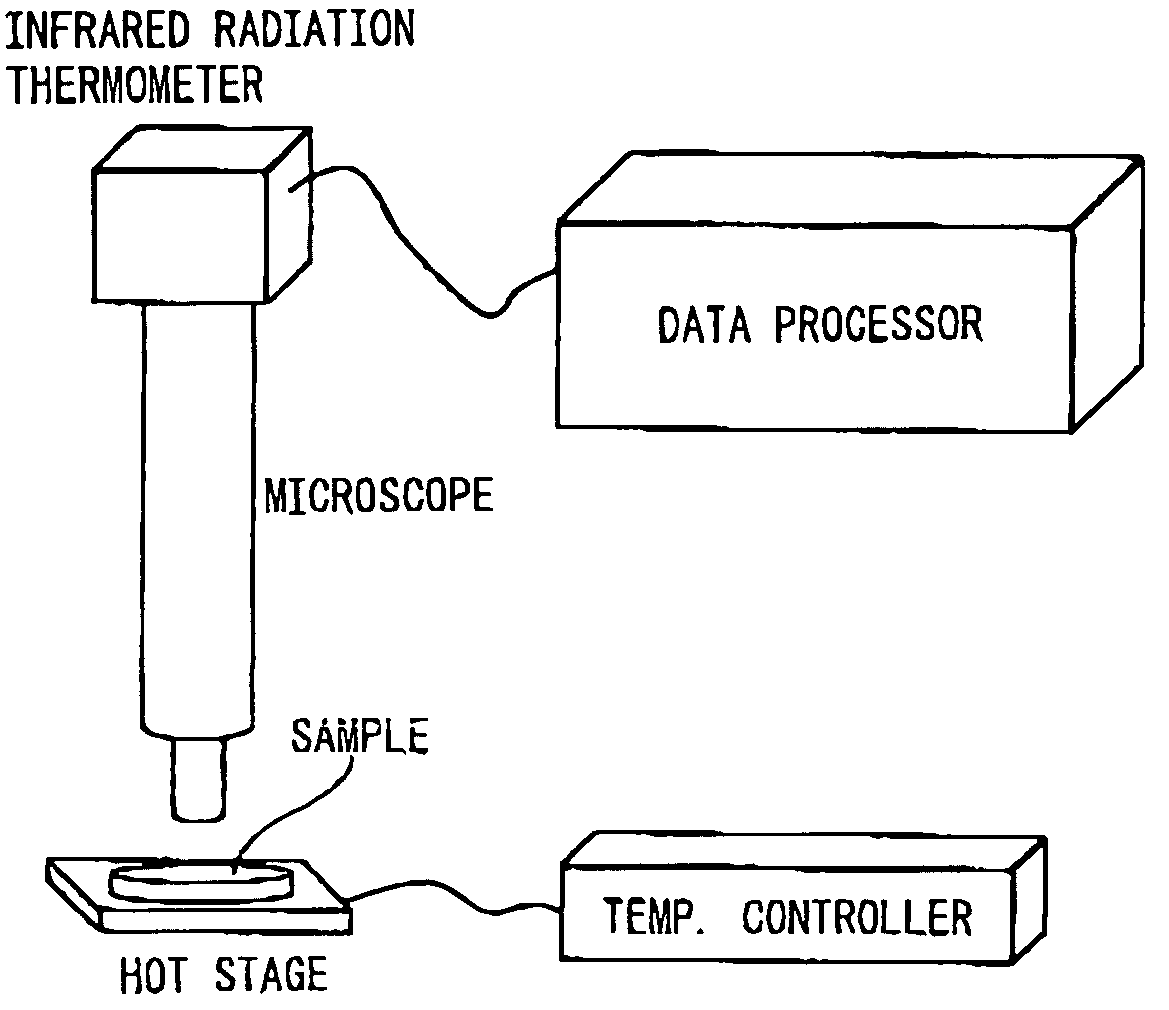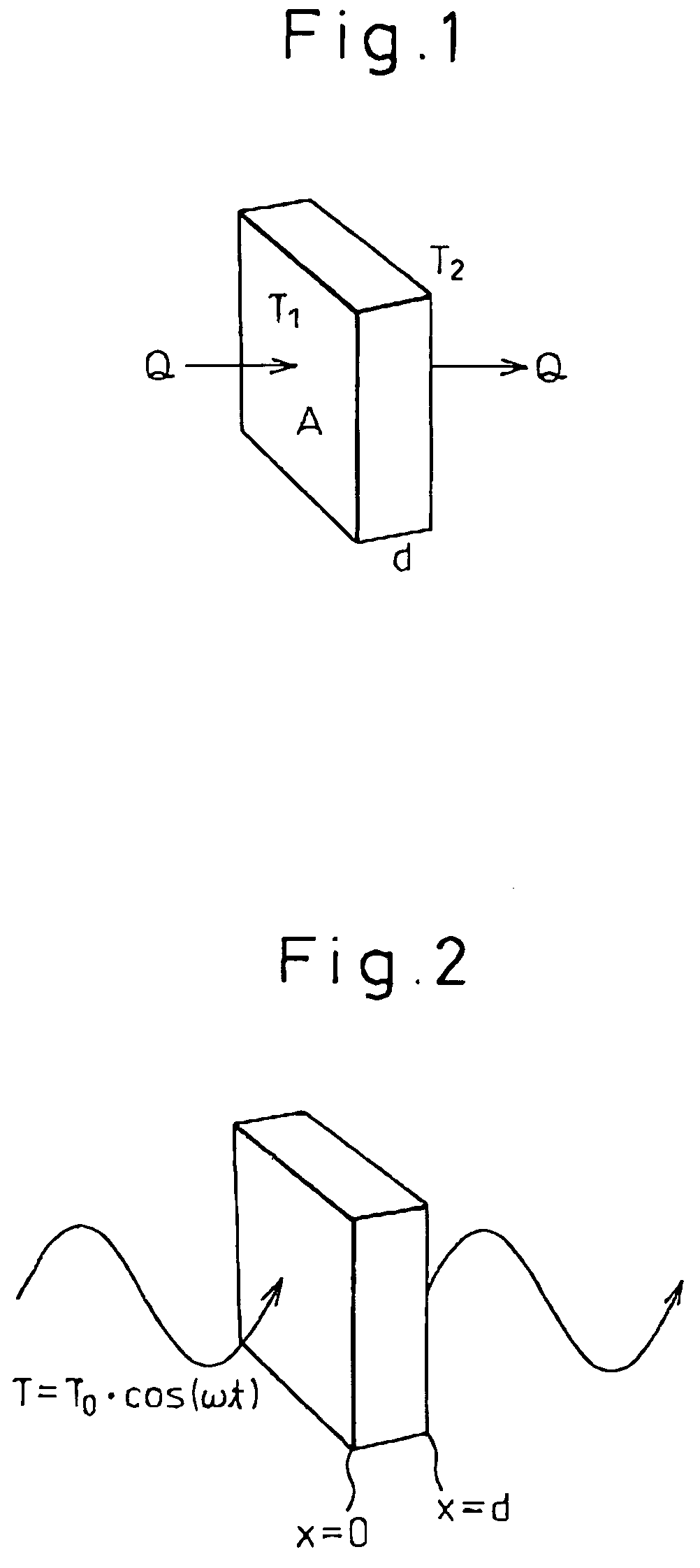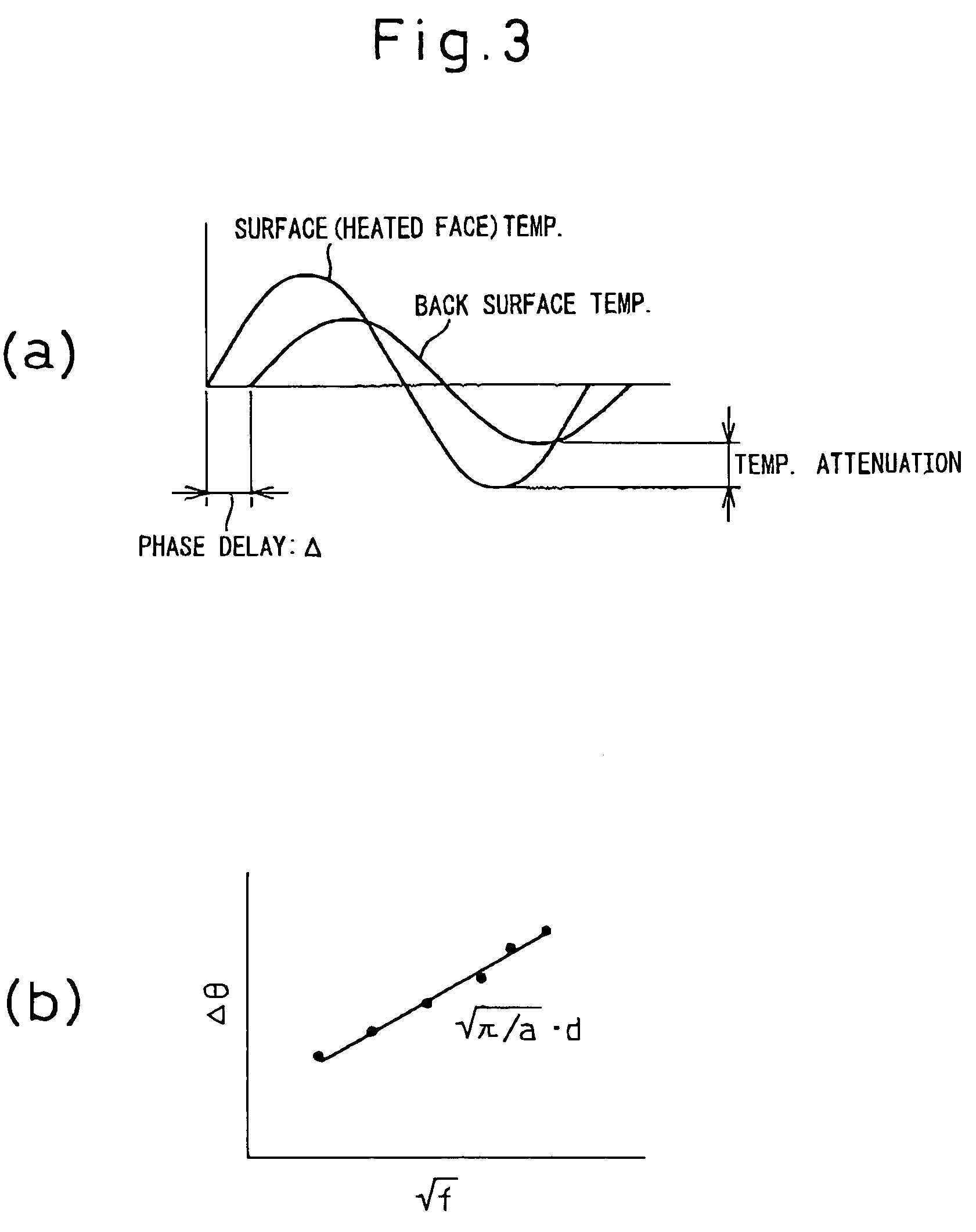Method for thermal analysis and system for thermal analysis
a technology of thermal analysis and system, applied in the direction of material heat development, optical radiation measurement, instruments, etc., can solve the problems of not having a two-dimensional thermal analysis method, difficult for these methods to thermally analyze minute portions, etc., and achieve the effect of easy follow-up or trace, and faster measurement speed
- Summary
- Abstract
- Description
- Claims
- Application Information
AI Technical Summary
Benefits of technology
Problems solved by technology
Method used
Image
Examples
example 1
(Example of Determining the Coefficient of Thermal Diffusion in the Direction of Thickness of a Film from Measurement of Phase Delay when a Temperature Wave is Diffused in the Direction of Thickness of a Film)
Experimental Method: A ribbon-shaped, flat heater electrode (1 mm×5 mm, thickness: 50 nm, resistance of flat electrode: 50 ohms) was formed by sputtering on Pyrex glass (thickness: 0.5 mm, mfd. by Corning Inc., trade name: Pyrex 7740) measuring about 2 cm×3 cm. The metal sputtering conditions used at this time were as indicated below.
<Metal Sputtering Conditions>
Sanyu Electronics, 5 mA, 2 kV, 5 minutes
A temperature wave was generated by applying an alternating current having a frequency of 0.5 Hz to the flat heater electrode obtained in the manner described above. The alternating current voltage input at this time was 3 Vp-p, the resistance of the flat electrode was 48 ohms, and the waveform was a sine wave.
Sample: A commercially available food wrapping film (poly...
example 2
(Analysis of Cooling Process of Plant Endothelial Cells-Analysis of Intercellular and Intracellular Crystallization Rate and Analysis of Temperature Propagation)
Experimental Method: The cooling process of onion endothelial cells adhered to a slide glass was measured on a sample stage provided with a Peltier element on a cooling plate placed on ice by using an infrared camera similar to that used in Example 1. During the cooling process, the cells were cooled at a cooling rate of about 200° C. / min over the range from room temperature to the vicinity of −30° C. The shutter speed of the infrared camera was set to 2 ms, the number of frames was set to 200 frames / second and the number of pixels was set to 128×128 pixels.
Sample: The first or second layer of the bud and the exodermis at a location nearly in the center from the location of the root were sampled from the outside of a fresh onion and adhered to a slide glass for use as the sample. The thickness of the exodermis was about...
example 3
(Temperature Calibration Method by Using a Black Body)
Experimental Method: A Teflon sheet measuring 1 cm×1 cm (thickness: 20 μm) was used for the measurement sample. A portion of the sample in the form of flat plate (size: 1 cm×1 cm) was coated with a carbon spray (emissivity: 0.94, thickness: 1 μm) to prepare a pseudo black body. A calibrated chromel-alumel thermocouple having a diameter of 25 μm (trade name: SPAL-001-50, SPCH-001-50, Omega Engineering Inc.) was attached to the surface of this pseudo black body, and the temperature was loaded into a personal computer (trade name: Inspiron 3000, Dell) through a predetermined interface (trade name: AT-GPIB, National Instruments) from the thermocouple. The conditions for capturing of the temperature data at this time were as shown below.
<Temperature Data Capturing Conditions>1000 Points / Sec
A ceramic heater measuring 1 cm×1 cm (trade name: Sakaguchi E. H. VOC) was adhered to the bottom (lower side) of the sample by using sil...
PUM
 Login to View More
Login to View More Abstract
Description
Claims
Application Information
 Login to View More
Login to View More - R&D
- Intellectual Property
- Life Sciences
- Materials
- Tech Scout
- Unparalleled Data Quality
- Higher Quality Content
- 60% Fewer Hallucinations
Browse by: Latest US Patents, China's latest patents, Technical Efficacy Thesaurus, Application Domain, Technology Topic, Popular Technical Reports.
© 2025 PatSnap. All rights reserved.Legal|Privacy policy|Modern Slavery Act Transparency Statement|Sitemap|About US| Contact US: help@patsnap.com



